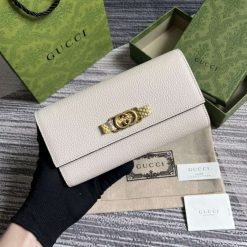Replica copyright vs. Authentic copyright: A Side-by-Side Comparison
Replica copyright vs. Authentic copyright: A Side-by-Side Comparison
Blog Article
The attraction of luxurious fashion is undeniable. copyright, one of the very most iconic brands on the planet, is coveted for its top quality quality, distinctive models, and status it confers upon its wearers. However, the high charge of true copyright products has sparked a huge phony market, creating copyright dupe bag products and services commonly available and attractive for budget-conscious style enthusiasts. But is buying fake copyright well worth it?
The Increase of the Bogus Industry
Fake style is a booming industry. Based on the Organisation for Financial Co-operation and Growth (OECD), the international business in phony things is projected to be price around $500 thousand annually. Style and accessories, particularly luxury stuff like copyright, dominate that market. Phony copyright products, from purses to shoes, can be found everywhere—from crowded block areas to dubious on the web stores. The attraction of copyright goods largely comes down to one thing—price. A copyright copyright case might charge $50 compared to the $2,000 price of an authentic one.

But, the affordability of reproductions comes with a hidden cost.
Why Phony copyright Falls Small
While at first glance, bogus copyright products and services may search like the real thing, the variations run deeper. First and foremost is quality. True copyright services and products are made from premium resources and involve meticulous craftsmanship. Phony products, on the other give, usually use subpar resources that wear out quickly. For instance, a phony copyright handbag's stitching might unravel in weeks, and the images might fade or remove off.
Additionally, fake copyright products seldom have the intricate detailing that the manufacturer is famous for. What may seem like a discount may possibly quickly lose their appeal when these techniques in generation become evident.

The Honest and Appropriate Implications
Buying copyright fashion also increases ethical and legal concerns. Phony things in many cases are manufactured in poorly controlled factories, where employees may experience harmful conditions, long hours, and reduced pay. Further, fake revenue ultimately finance illicit activities, including arranged crime. According to a 2017 report by the Global Step of Commerce, bogus profits are often connected to more considerable offender enterprises.
There's also personal dangers attached. Buying phony copyright items from unverified online stores can show customers to cons, scam, and potential identity theft.
The Larger Picture
There's no denying the appeal of copyright's luxurious image, but bogus items do not provide the prestige or quality that the manufacturer represents. Instead, they pose honest and long-term economic dangers that outweigh the short-term savings. For many who aspire to possess copyright, saving for an authentic part or seeking second-hand alternatives from respected dealers is a more ethical—and finally satisfying—choice. In regards to artificial copyright, the fact remains clear—it's not worth the cost.
Report this page